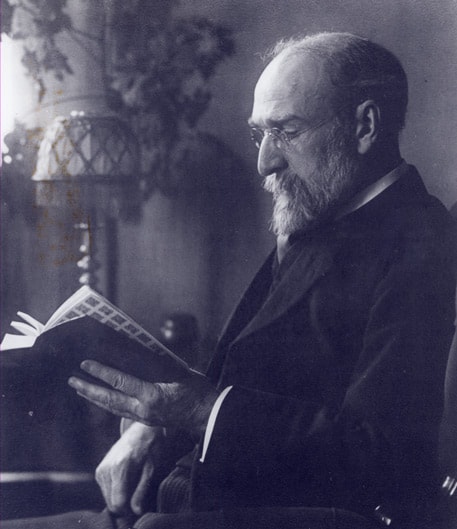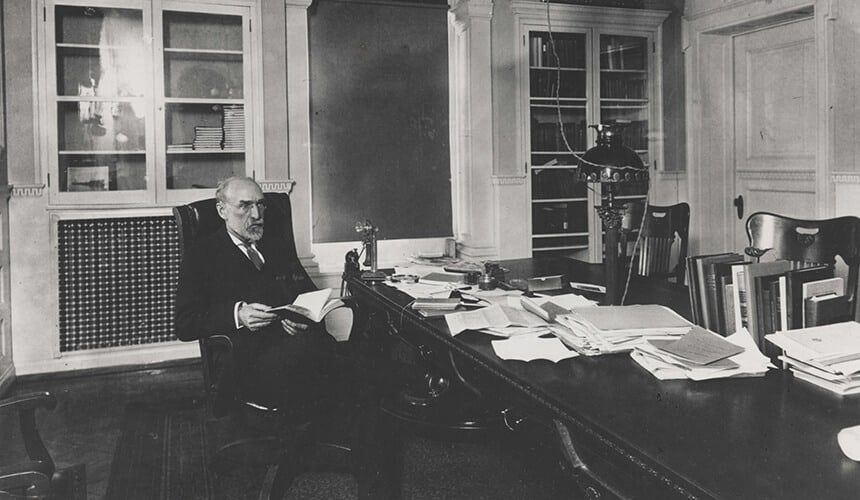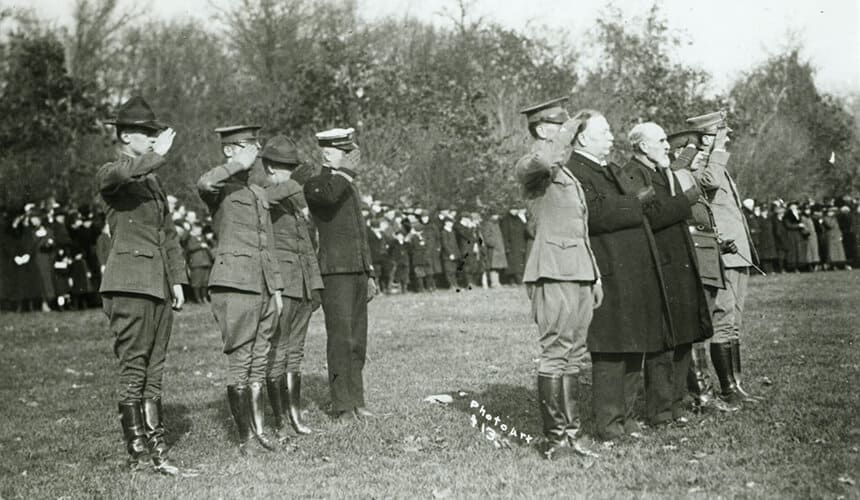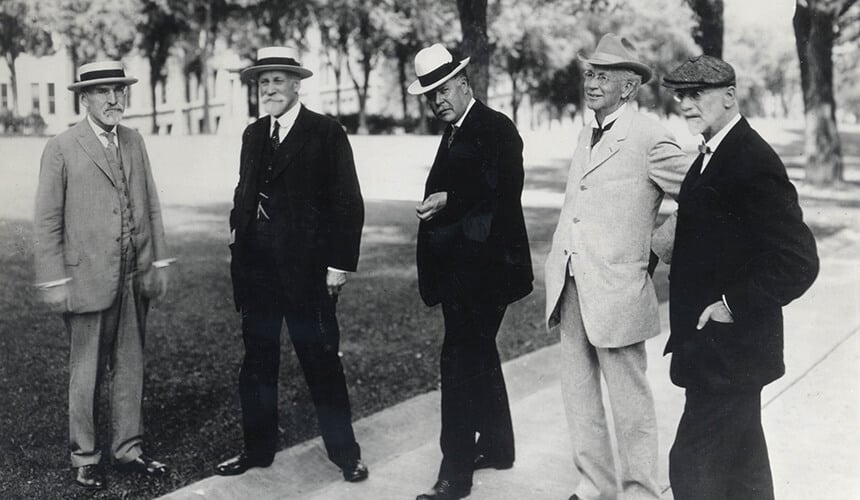Charles Van Hise
Out of the Classroom, into the Community
Just as Wisconsin was written all over Charles Van Hise BS1879, BS1880, MS1882, PhD1892, his legacy is written all across Wisconsin.
He was the son of a Rock County farm couple, enrolled at the UW, chummed with a young classmate who became known nationally as Robert “Fighting Bob” La Follette BS1879, LLD1901 and spent his entire career at the university.
He earned the UW’s first PhD, earning that degree in geology. He joined the faculty in 1879 as an instructor of chemistry and metallurgy and rose to become a professor of geology.

This portrait of Charles Van Hise studiously reading was taken around 1914. (Image courtesy of the UW Archives, #S08081.)
In 1903, Van Hise — heavily backed by La Follette, who was then Wisconsin’s governor — was chosen as the first UW alumnus to serve as its president. In his inaugural address, he declared, “I shall never be content until the beneficent influence of the university reaches every home in the state.”
His words launched what later became known as the Wisconsin Idea, the principle that the university should influence people’s lives beyond the classroom.
Van Hise prodded faculty to team with legislators to draft groundbreaking laws, including the nation’s first worker’s compensation system, tax reforms, and utility regulation.
During his 15-year presidency, he created the university extension system — now known as UW–Extension — to oversee summer courses and take university knowledge to state communities. Under his watch, the faculty expanded from 250 to 750, the campus’s size doubled, and university revenue soared.
Muckraking journalist Lincoln Steffens wrote that Van Hise was “in a class by himself among college presidents.”
From The Park
I shall never be content until the beneficent influence of the University reaches every home in the state.
Source: Speech, Wisconsin Idea Website
Van Hise was also a towering figure in conservation circles, and his 1910 book, Conservation of Natural Resources in the United States, is recognized as one of the field’s most important works.
Van Hise died unexpectedly in 1918 after minor surgery. His work is recognized by Van Hise Hall, the campus’s tallest structure, and by Van Hise Rock, a quartzite monolith and National Historic Landmark outside of Baraboo.
The scale of these tributes seems fitting for a man who envisioned UW guiding the state “until the university is built as broad as human endeavor, as high as human aspiration.”
 67° F
67° F

